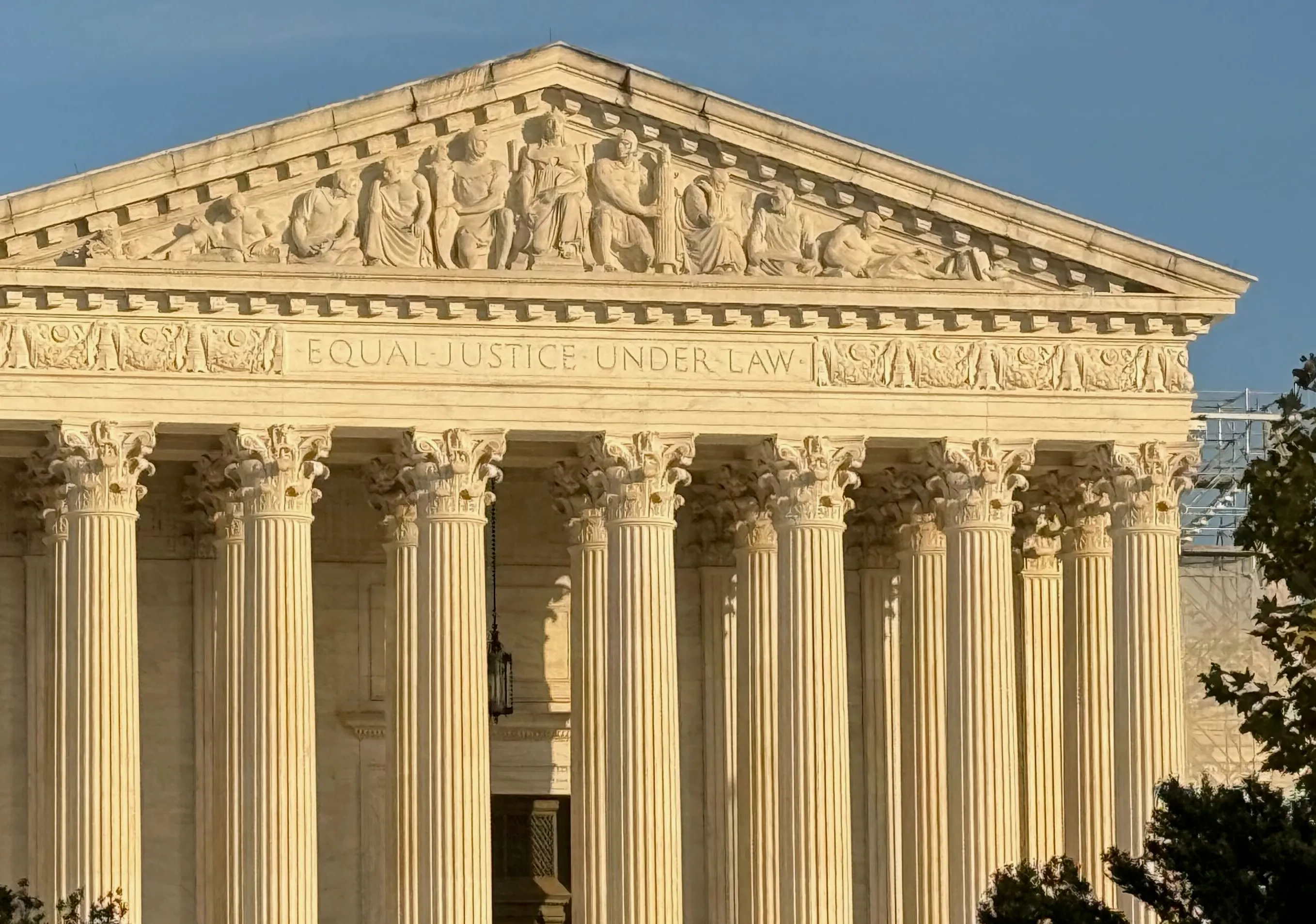Will the Supreme Court hear Ghislaine Maxwell’s case?


While President Donald Trump fields questions about a potential pardon for Ghislaine Maxwell, the Supreme Court is also playing a role in the debate over her future. As of Monday, Maxwell’s appeal of her conviction was fully briefed with the court, and on Wednesday it was distributed for the court’s “long conference” on Sept. 29, at which the justices consider the many petitions that build up during the summer recess.
In weighing Maxwell’s petition, the justices will consider a “circuit split” – that is, a division between two or more courts of appeals on a legal question – that’s developed over the past 50 years. This raises the question: What factors determine whether a circuit split catches the Supreme Court’s attention?
First, some background. Maxwell, a longtime associate of Jeffrey Epstein (and his former girlfriend), is currently serving a 20-year prison sentence after being found guilty of sex trafficking a teenage girl, among other charges. But she contends that the U.S. Attorney’s Office for the Southern District of New York, which brought the charges, unlawfully disregarded a 2007 non-prosecution agreement between Epstein and the U.S. Attorney’s Office for the Southern District of Florida that covered some of her crimes.
In addition to protecting Epstein from certain future charges in that district, the agreement protected his “potential co-conspirators.” Specifically, it said, “if Epstein successfully fulfills all the terms and conditions of this agreement, the United States also agrees that it will not institute any criminal charges against any potential co-conspirators of Epstein.”
Maxwell’s appeal centers on the language of the co-conspirators clause, highlighting its use of “United States” instead of “this District” or “the United States Attorney,” which are used elsewhere in the agreement to geographically limit the protections for Epstein. Because the co-conspirators clause uses “United States,” Maxwell’s team argues that it binds every U.S. attorney’s office in the country, rather than just the Southern District of Florida, and that the Southern District of New York was barred from bringing certain charges against her.
“In this case, the government made a written promise that Epstein’s co-conspirators would not be prosecuted by the United States, and Maxwell was in fact prosecuted as a co-conspirator of Epstein by the United States,” reads Maxwell’s Supreme Court petition, which was filed on April 10.
Maxwell is specifically appealing a ruling from the U.S. Court of Appeals for the 2nd Circuit, which held that a non-prosecution agreement is binding only in the region that made the deal unless the agreement explicitly describes a broader scope. “There is nothing in the NPA that affirmatively shows that the NPA was intended to bind multiple districts. Instead, where the NPA is not silent, the agreement’s scope is expressly limited to the Southern District of Florida,” the decision explained.
Maxwell’s Supreme Court petition asks the Supreme Court to decide whether the 2nd Circuit correctly concluded that agreements are only binding on the districts that made them unless they explicitly say they bind other districts. “Circuits are split on whether promises in a plea agreement in one district on behalf of the ‘United States’ or the ‘Government’ binds the Government in other districts,” it said. In support of this, the petition cites previous rulings from U.S. Courts of Appeals for the 3rd, 4th, 8th, and 9th Circuits, which hold that, absent an “express limitation,” plea agreements that make a promise on behalf of “the United States” or “the government” bind the federal government as a whole. (It also cites a previous ruling from the U.S. Court of Appeals for the 7th Circuit that supported the 2nd Circuit’s decision.)
In its brief in opposition, filed on July 14, the federal government urged the Supreme Court to reject Maxwell’s petition for review. U.S. Solicitor General D. John Sauer acknowledged that the courts of appeals are divided over how to determine the scope of a plea agreement. However, he said, Maxwell’s case is not an appropriate one with which to resolve this question – in part because, rather than having the court deal directly with the legal issue at the center of the case, the 2007 agreement would require a “case-specific interpretation” and assessment of Maxwell’s claims about how the co-conspirators clause evolved over multiple drafts to determine whether the use of “the United States” affects the agreement’s scope.
In their reply brief, filed on Monday, Maxwell’s attorneys again outlined their case for the justices to take up Maxwell’s appeal. The brief emphasized the government’s acknowledgement of a circuit split, arguing that “[s]uch an acknowledged conflict among the circuits demands this Court’s intervention.”
The significance of a circuit split
Seasoned Supreme Court watchers will not be surprised that Maxwell’s attorneys discussed the circuit split at length. Although the justices consider a number of factors when weighing whether to hear a case, many legal experts believe highlighting a circuit split gives you the best chance to have your petition granted.
However, it’s certainly not true that all petitions raising a circuit split are successful, partly because the Supreme Court only takes up around 70 cases per term while receiving between 7,000 and 8,000 petitions. Indeed, a 2019 analysis from political scientists Deborah Beim and Kelly Rader found that around two-thirds of circuit splits go unresolved by the court.
To determine which circuit splits require attention, the justices consider factors like how recently the split developed, how specific or general the legal question at the center of the split is, and, according to the 2019 analysis, how many potential or actual litigants are affected by the split. And as the government’s brief implied, the justices also consider the specific details of the case that’s creating or deepening the split. Sometimes, the case in question may be considered by the court to be “factbound” – that is, too unique or complicated to be the right vehicle for resolving confusion in the lower courts.
If the court turns down Maxwell’s petition, it will likely be because of just such an issue. For one thing, the 2007 agreement uses a broad mix of terms to refer to prosecutors instead of using “the United States” or “the government” throughout. For another, it’s unusual for a non-prosecution agreement to include a co-conspirators clause, according to the government’s brief, and unusual for a case on the scope of an agreement to be brought by a co-conspirator, rather than the party at the center of the agreement.
Additionally, Maxwell’s petition may not be seen as a strong candidate because it didn’t create the present circuit split or do much to change the nature of it. In its ruling in Maxwell’s case, the 2nd Circuit noted that “circuits have been split on this issue for decades” and that it had issued a similar ruling in 2010.
The Supreme Court isn’t expected to announce whether it will hear Maxwell’s appeal until sometime in October. Maxwell will almost certainly remain in the news until then, especially if Trump continues to discuss a potential pardon. Such a pardon would make Maxwell’s Supreme Court petition moot – that is, no longer a live controversy – and leave this circuit split to be resolved another day.
Posted in Court News
Cases: Maxwell v. United States